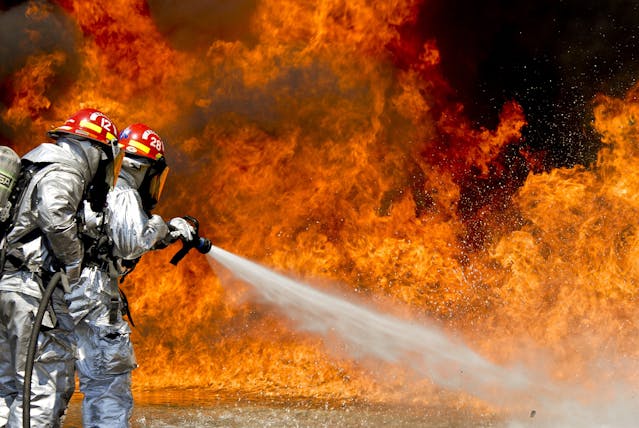Fire safety is a critical concern for any building, whether it’s a residential property, commercial space, or industrial facility. Understanding and mitigating fire risks is essential to protect lives, property, and business continuity. This is where a fire risk assessment comes into play—a systematic process to identify potential fire hazards and evaluate how to reduce or eliminate them. In this blog post, we’ll delve into what fire risk assessment is, why it’s important, and how to conduct one effectively.
What is Fire Risk Assessment?
A fire risk assessment is a structured evaluation of a building or area to identify fire hazards, assess the risk of those hazards causing a fire, and determine the impact a fire would have on people and property. It involves examining all the factors that can lead to a fire and implementing measures to minimize or prevent the risk. This process is not a one-time task but should be reviewed and updated regularly to ensure ongoing safety.
Why is Fire Risk Assessment Important?
- Legal Compliance: In many countries, conducting a fire risk assessment is a legal requirement, especially for workplaces, rental properties, and public buildings. Failure to comply can result in hefty fines, legal action, or even imprisonment.
- Safety of Occupants: The primary purpose of a fire risk assessment is to ensure the safety of everyone within the building. By identifying and mitigating fire hazards, you significantly reduce the risk of injury or loss of life.
- Protection of Property: Fires can cause extensive damage to property, leading to costly repairs and loss of assets. A thorough fire risk assessment helps protect your property and minimizes potential damage.
- Business Continuity: For businesses, a fire can result in significant downtime and financial losses. By proactively managing fire risks, you ensure that your business can continue operating with minimal disruption.
Key Components of a Fire Risk Assessment
A comprehensive fire risk assessment typically involves the following steps:
- Identify Fire Hazards:
- Sources of Ignition: Anything that could start a fire, such as open flames, electrical equipment, or hot surfaces.
- Sources of Fuel: Materials that can burn, including paper, fabric, chemicals, and flammable liquids.
- Oxygen Sources: Fire needs oxygen to burn. Assess any sources that can provide or enhance oxygen, such as air conditioning systems or oxygen tanks.
- Identify People at Risk:
- Occupants: Consider everyone in the building, including employees, visitors, customers, and contractors.
- Vulnerable Individuals: Pay special attention to individuals who may be at greater risk, such as the elderly, children, or those with disabilities.
- Evaluate, Remove, Reduce, and Protect from Risk:
- Evaluate: Assess the level of risk associated with each hazard. Determine the likelihood of a fire starting and the potential impact if it does.
- Remove or Reduce: Implement measures to eliminate or reduce fire hazards. For example, store flammable materials safely, maintain electrical equipment, and implement no-smoking policies.
- Protect: Install fire protection measures such as smoke alarms, fire extinguishers, and sprinkler systems. Ensure that emergency exits are clearly marked and accessible.
- Record, Plan, and Train:
- Record: Document the findings of your fire risk assessment and the measures you have implemented to address identified risks.
- Plan: Develop an emergency plan that includes evacuation procedures, assembly points, and roles and responsibilities during a fire emergency.
- Train: Ensure that all occupants, especially employees, are trained on fire safety procedures and know how to respond in case of a fire.
- Review and Revise:
- Regular Reviews: A fire risk assessment should be reviewed regularly and updated as necessary, particularly when there are changes to the building layout, occupancy, or use of space.
- Continuous Improvement: Use the review process to identify areas for improvement and ensure that fire safety measures remain effective over time.
Best Practices for Conducting a Fire Risk Assessment
- Engage a Competent Person: A fire risk assessment should be carried out by someone with the necessary knowledge, experience, and training in fire safety. In some cases, it may be advisable to hire a professional fire risk assessor.
- Use a Systematic Approach: Follow a structured process and use a checklist to ensure that no potential fire hazards are overlooked.
- Communicate Findings: Share the results of the fire risk assessment with all relevant parties, including employees, tenants, and building management.
- Implement and Monitor Control Measures: Put in place the necessary measures to address identified risks and regularly monitor their effectiveness.
Conclusion
Fire risk assessment is a crucial component of fire safety management. By systematically identifying and mitigating fire hazards, you can protect lives, property, and ensure business continuity. Remember, fire safety is an ongoing responsibility. Regularly review and update your fire risk assessment to adapt to any changes in your building or operations. Taking these proactive steps can make all the difference in preventing a fire disaster.
